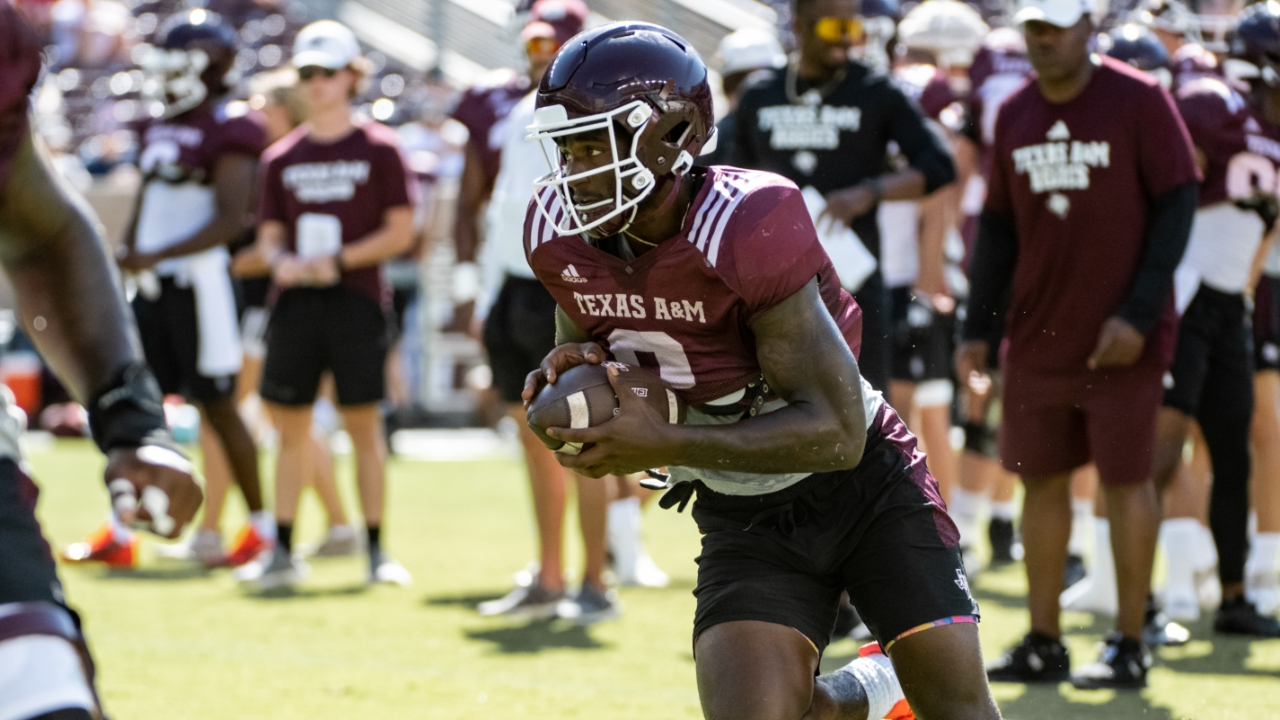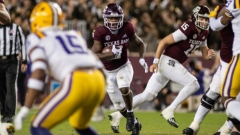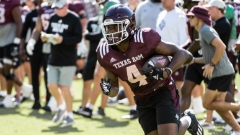
Quality horses allows Fisher to weigh various tailback philosophies
It would seem obvious a team of horses is more effective than one.
Unless, of course, the single horse is akin to Secretariat.
In that case, feed him well, and let the stud horse run.
It’s kind of the same for running backs in college football.
From the Army’s “Mr. Inside” (Doc Blanchard) and “Mr. Outside” (Glenn Davis) to SMU’s “Pony Express” of Eric Dickerson and Craig James to USC’s “Thunder and Lightning” duo of Reggie Bush and LenDale White, teams have often had running backs share the load.
But teams with a racehorse running back like Herschel Walker, Tony Dorsett or Bo Jackson were content to ride him as far as he could take them.
Texas A&M coach Jimbo Fisher has tried both approaches.
He used the "running back by committee” approach to help win a national championship. He has also had great success relying on a featured back.
Why the change of philosophy? Well, that answer also would seem obvious.
“I just think it’s determined by how many guys deserve to play,” Fisher said. “(They) have earned the right to play. Not just play, but play winning football.

“Sometimes, you have two, three and maybe even four. Sometimes, you have one and maybe possibly two.”
Former Texas A&M coach R.C. Slocum faced that situation in 1993.
Greg Hill, Rodney Thomas and Leeland McElroy all became NFL running backs. Slocum unleashed that three-headed monster to win the 1993 Southwest Conference title.
Twenty years later, Fisher unleashed his own three-headed monster to help Florida State win the national championship.
That year, Devonta Freeman, Karlos Williams and James Wilder Jr. combined to rush for 2,309 yards and 33 touchdowns.
Fisher may be raising up another trio this season. A committee of Amari Daniels, Le’Veon Moss and Rueben Owens may share the Aggies’ rushing load.
Or not.
If a premier runner emerges, Fisher will let him run.
“You want to have depth, but if you’ve got a guy that’s elite and really hot, you want to keep him (hot),” Fisher said.
To his point, Fisher relied heavily on Dalvin Cook at Florida State, who rushed for 1,691 yards in 2015 and 1,765 yards in 2016.
At A&M, he featured Trayveon Williams, who rushed for 1,760 yards in 2018, Isaiah Spiller, who had 1,036 yards in 2020 and Devon Achane, who rushed for 1,102 yards last season.
A&M doesn’t know if it has a featured back.
Last season, Daniels rushed for 200 yards. Moss had 114. Owens was in high school.
But they were all highly-touted recruits playing behind Achane. They’ll get their chance.
The question is who should get the most chances? And who can handle the most chances?

“Certain guys can carry it 25 times a game, and it doesn’t bother them,” Fisher said. “Sometimes it doesn’t have anything to do with size. Trayveon was a guy who could carry a large load and was not an extremely big guy but ran for 1,700-and-something yards.
“Achane was a guy who could take large volumes of carries. Dalvin was not gigantic, but he could take large volumes. Freeman could.
“Other guys take just 15 touches. It varies, but you like to have a bunch of (running backs). Knicks and knacks and getting banged up at that position kind of goes with the territory."
Running backs, though, can be territorial. Some feel the more carries they get, the better they get.
Others don’t mind sharing the load. Hill, Thomas and McElroy never complained.
Fisher doesn’t seem too concerned about how Daniels, Moss and Owens would accept a committee approach.
He cited Freeman, Williams and Wilder as examples of guys who embraced it and had success.
“They were all each other’s biggest cheerleaders on the sidelines,” Fisher said. “It goes back to who you are as a person. You want your individual goals, but how do you want your team to do? That goes back to a lot of character and personality.”
If necessary, hopefully, A&M’s backs will have the same attitude.
And get the same results.


